To grade a Washington quarter, examine wear on the highest points: Washington’s cheek, hair curls, and the eagle’s breast feathers. Uncirculated (Mint State) coins display original mint luster across all surfaces with no wear on high points. Circulated coins show varying degrees of wear—Good (G) grade features heavy wear but readable dates, while About Good (AG) shows flat details merging with the rim. Use bright lighting to spot wear and marks, especially on Washington’s face and open fields. Compare your coin conservatively against grading standards, as higher grades significantly impact value. Online resources from NGC and PCGS provide detailed photo guides to assist accurate grading.
You’ve pulled a Washington quarter from your pocket change or inherited a collection, and you’re wondering what it’s worth. The difference between a worn Good-4 quarter worth face value and a pristine Mint State-65 specimen valued at $45 or more comes down to one skill: accurate grading. By learning to identify specific wear patterns on critical areas and recognizing original mint luster, you can confidently assess your Washington quarters without sending every coin to professional grading services.
Understanding the Washington Quarter Design’s Critical Points
The Washington quarter’s design, introduced in 1932, features high-relief details that wear predictably. On the obverse, George Washington’s portrait includes his hair curls, cheek, and jawline as the highest points of metal. These areas make first contact with other surfaces during circulation, showing wear before lower-relief details fade.
The reverse presents the heraldic eagle with outstretched wings. The eagle’s breast feathers form the highest point here, consisting of horizontal lines that flatten progressively as the coin circulates. The wing feathers, while prominent, sit slightly lower and wear more slowly. Understanding this hierarchy of wear helps you distinguish between adjacent grades where a single point difference can mean $15 to $30 in value for key dates.
The coin’s fields, those flat areas surrounding the design elements, also play a crucial role. On uncirculated specimens, these surfaces display cartwheel luster—a rotating band of light that moves as you tilt the coin. Any friction or contact that disturbs this luster immediately disqualifies a coin from Mint State grades.
Identifying Circulated Washington Quarters
Good-4 Grade Characteristics
A Washington quarter grading Good-4 shows heavy wear across all surfaces. Washington’s hair has merged into a nearly smooth outline with perhaps one or two deepest curls barely visible as shallow depressions. His cheek, ear, and facial features have flattened significantly, though you can still distinguish the nose and mouth as separate elements. The date remains fully readable—this is the minimum requirement for G-4—and the motto “IN GOD WE TRUST” shows complete letters, even if weak.
On the reverse, the eagle’s breast feathers have completely vanished, leaving a smooth, worn surface. The wing feathers show only as vague parallel lines without individual separation. The lettering around the rim remains intact but appears weak, especially in “QUARTER DOLLAR” at the bottom. Expect rim wear where the raised edge has begun merging with the field, though the rim itself hasn’t disappeared entirely.
Coins in G-4 condition typically trade at silver melt value when dated 1964 or earlier (90% silver content), currently around $3.50 to $4.00 depending on silver spot prices. Post-1965 clad quarters in G-4 condition hold only face value unless they’re error coins.
Fine-12 Grade Standards
At Fine-12, significantly more detail emerges. Washington’s hair shows approximately half of the original curls as distinct, separated lines. The curls at the temple and behind the ear, being in higher relief, remain most visible. His cheek displays light to moderate wear but retains its rounded contour—you won’t see the flatness characteristic of Good grades. The jawline remains sharp and well-defined.
The reverse eagle’s breast feathers show about 50% of their original detail. You’ll count five to seven distinct horizontal lines across the breast, though they lack the crispness of higher grades. Wing feathers display clear separation with perhaps 60-70% of individual feathers visible as distinct elements.
All lettering appears bold and complete. The fields show uniform wear without the deeper scratches or gouges that might have developed in lower grades. A 1932-D quarter in F-12 condition, with its low mintage of 436,800 pieces, commands $125 to $165 at auction, while common-date silver quarters in this grade typically bring $5 to $7.
About Uncirculated Grades
About Uncirculated represents the transition zone between circulated and Mint State coins. AU-50 shows slight wear on Washington’s cheek, the hair above his ear, and the highest curls at the temple. This wear appears as light flatness—the detail remains visible, but the metal’s texture differs slightly from surrounding areas. Original mint luster covers 50% or more of the surfaces, typically remaining in protected areas like between letters and around design elements.
AU-58 coins display only the faintest friction on those same high points. Luster covers 90% of surfaces, with tiny breaks only on Washington’s cheek and perhaps one or two hair curls. The eagle’s breast feathers show complete detail with only microscopic flatness on the very highest points. Under magnification at 5x, you might question whether the wear is genuine or simply a weak strike.
The value difference between AU-58 and MS-60 can be dramatic. A 1932-S quarter in AU-58 sells for $180 to $220, while the same date in MS-60 jumps to $275 to $325—a 40% premium for eliminating that last trace of wear.
Grading Mint State Washington Quarters
Detecting Any Wear Disqualifies Mint State
The fundamental rule for Mint State grading: absolutely zero wear on any surface. Even a single pinpoint of friction on Washington’s cheek drops the coin from MS-60 to AU-58. This distinction requires proper lighting and often magnification. Professional graders use halogen lamps providing bright, directional light that reveals wear as a subtle texture change—worn areas appear microscopically smoother than lustrous surfaces.
Hold your quarter at a 45-degree angle under a desk lamp with a 60-watt incandescent or equivalent LED bulb. Rotate the coin slowly while watching Washington’s cheek. Mint luster creates a rolling effect, like light moving across brushed metal. Wear disrupts this pattern, creating a flat, dull spot that doesn’t reflect light the same way. Check the hair curls above the ear next—these wear first on many specimens.
On the reverse, examine the eagle’s breast feathers under the same lighting. Each feather on a Mint State coin shows sharp edges with tiny parallel lines running across them. Wear first appears as a slight rounding of the highest feather edges or a dulling of the parallel lines. If you see any smoothing or texture change, you’re looking at an About Uncirculated coin, regardless of how strong the remaining luster appears.
Mint State Grade Distinctions
MS-60 to MS-62: These grades show complete luster and zero wear but have numerous contact marks from the minting process and bag handling. You’ll see scattered marks across Washington’s face, multiple hairlines in the fields, and possibly a few small edge nicks. An MS-60 might have a distracting mark on Washington’s cheek or a significant scrape across the field. MS-62 coins show fewer marks, with nothing major on focal points.
MS-63 to MS-64: Contact marks decrease noticeably. An MS-63 quarter displays scattered small marks but nothing significant on the cheek or central reverse. Fields might show three to five minor hairlines but remain attractive overall. MS-64 specimens present as nice coins with only minor marks visible to the naked eye, typically limited to the fields or peripheral areas. Under magnification, you might count 10-15 tiny contact marks total.
MS-65 and Higher: These represent the top tier. MS-65 quarters show perhaps four to six minor marks total, none in prime focal areas. Luster blazes without interruption, and strike quality becomes increasingly important—weak strikes rarely grade above MS-64 even with minimal marks. MS-66 coins display two to three barely noticeable marks, while MS-67 specimens approach perfection with only one or two microscopic marks findable under magnification.
A common-date Washington quarter from the 1950s-1960s in MS-65 condition typically sells for $35 to $50. The same date in MS-67 might bring $200 to $400, reflecting the exponential rarity of higher-grade coins. For key dates like 1932-D or 1932-S, an MS-65 specimen commands $2,500 to $3,500, while MS-67 examples sell for $25,000 or more at major auctions.
Essential Grading Equipment and Techniques
Proper Lighting Makes the Difference
Professional graders use tensor lamps with 100-watt-equivalent LED bulbs positioned 12-18 inches from the work surface. This bright, directional light reveals wear patterns invisible under ambient lighting. For home grading, a simple articulating desk lamp works well. Position it to cast light at a 30-45 degree angle to the coin surface rather than straight down—this highlights the texture differences between worn and lustrous metal.
Natural sunlight works exceptionally well for detecting luster breaks. Hold the coin near a window on a bright day, tilting it slowly. Mint luster will rotate around the coin in a continuous band. Any wear interrupts this band, creating a dull spot that doesn’t participate in the luster rotation. This technique proved invaluable when a collector recently discovered that a quarter he’d graded MS-63 actually showed slight cheek wear, revising it to AU-58 and adjusting his expected sale price from $75 to $35.
Magnification Requirements
A 5x jeweler’s loupe provides sufficient magnification for most grading decisions. This power level reveals contact marks, luster characteristics, and wear patterns without the excessive magnification that makes every coin look worse than it actually is. Hold the loupe close to your eye, then bring the coin toward the loupe until it comes into sharp focus, typically about two inches away.
For distinguishing MS-64 from MS-65 or higher grades, 10x magnification helps count tiny marks and assess their severity. Professional grading services use binocular microscopes at 7-10x for final grade determinations. However, remember that grading reflects the coin’s appearance to the naked eye from a normal viewing distance. If you need 20x magnification to see a problem, it probably doesn’t affect the technical grade significantly.
The Conservative Grading Approach
Markets reward conservative grading. When uncertain between two grades, assign the lower one. A coin you call MS-63 that a professional service grades MS-64 creates a pleasant surprise for buyers and builds your reputation for honest assessments. Conversely, calling an AU-58 coin MS-63 leads to disappointed buyers and damaged credibility.
This conservative approach proves especially important when significant value jumps occur between grades. The difference between AU-58 and MS-60 for a 1936-D quarter might be $15 to $20, but for a 1932-D, it’s $100 to $150. When selling, grade conservatively and price accordingly—you’ll attract serious collectors who appreciate accurate descriptions.
Comparing Your Coins to Professional Standards
NGC and PCGS, the two major third-party grading services, maintain extensive online photo archives showing Washington quarters in each grade. NGC’s Coin Grading Guide presents obverse and reverse images of quarters from Good-4 through MS-67, with detailed descriptions of wear patterns and luster characteristics. PCGS Photograde offers similar resources with additional information about strike variations and common grading mistakes.
Use these references systematically. First, determine whether your coin is circulated or Mint State using the wear detection techniques described above. If circulated, narrow the range to About Good through Extremely Fine based on overall detail remaining. Then compare your specific coin side-by-side with reference photos, matching wear patterns on Washington’s hair, cheek, and the eagle’s feathers.
For Mint State coins, assess the mark population and severity. Count the contact marks visible to your naked eye from 12 inches away—this number roughly corresponds to grade ranges. Five to ten marks suggests MS-63 to MS-64, two to four marks indicates MS-65 to MS-66, while zero to one mark points toward MS-67 or higher, assuming strong luster and strike.
The Sheldon Scale, running from 1 to 70, provides the framework all these grades follow. Washington quarters exist in sufficient quantities that you’ll rarely encounter the lowest grades (Poor-1 through Good-3) except on damaged or environmental-damaged specimens. Most circulated quarters fall between G-4 and AU-58, while collectible uncirculated examples range from MS-60 to MS-67, with MS-68 coins known but extremely rare for most dates.
Developing Your Grading Skills Through Practice
Start building a reference collection of graded Washington quarters. Purchase three to five professionally graded coins spanning different grade levels: perhaps a G-4, F-12, AU-58, MS-63, and MS-65. These certified examples, encapsulated in sealed holders with the grade printed on the label, cost $30 to $100 each for common dates but provide invaluable learning tools worth far more than their purchase price.
Study these reference coins under your lighting setup, memorizing the wear patterns and luster characteristics of each grade. Notice how the G-4 coin’s hair appears as a vague outline, the F-12 shows half the curls, and the AU-58 displays nearly complete detail with just a trace of friction. Compare the MS-63 coin’s scattered marks to the MS-65’s near-absence of contact, understanding how this difference justifies the grade separation.
Practice grading raw (non-certified) quarters from your collection or purchased lots, writing down your grade assessment before checking auction records or submitting coins to grading services. Track your accuracy over time. Most experienced collectors achieve consistency within one grade point—calling an MS-64 coin MS-63 or MS-65—after grading 100-200 Washington quarters. Accuracy within a half-point requires grading several hundred coins and often benefits from attending coin shows where you can examine dealer inventory and discuss grading decisions.
When Professional Grading Services Make Financial Sense
Submitting coins to NGC or PCGS costs $20 to $50 per coin depending on service level and turnaround time, plus shipping and insurance. This investment makes sense when the certification adds more value than it costs. For Washington quarters, consider professional grading when:
A common-date coin appears to grade MS-65 or higher—certification transforms a $45 raw quarter into a $60-75 certified coin while providing buyer confidence. Key dates (1932-D, 1932-S, 1936-D, 1937-D, 1938-S, 1939-S) in any Mint State grade benefit from certification, as these coins command significant premiums and certification eliminates authenticity concerns. Any quarter potentially worth more than $100 generally justifies the grading fee through increased marketability.
Circulated coins rarely warrant professional grading unless they’re rare dates in exceptional condition for the grade. An Extremely Fine-45 1932-D quarter worth $250 raw might sell for $300 certified, barely covering the grading fee. However, the same date in AU-58 worth $220 raw could sell for $280-300 certified, making submission worthwhile.
Bulk submission programs offered by coin clubs and dealers reduce per-coin costs to $12-18, making certification viable for more modestly valued coins. If you’ve accumulated 20-30 Washington quarters that might grade MS-64 or better, a bulk submission turns marginal decisions into clear profit opportunities.
Putting Your Grading Knowledge to Work
Start examining the Washington quarters already in your possession with your new grading knowledge. Sort them into broad categories: heavily worn (G-4 to F-12), moderately worn (VF-20 to AU-58), and uncirculated (MS-60 and up). Within each category, arrange coins by appearance from most worn to least worn, then compare your sequence to the grading standards discussed above.
Focus your learning on the grade ranges where you have coins. If your collection contains mostly AU and low Mint State quarters, concentrate on mastering the subtle distinctions between AU-58, MS-60, MS-62, and MS-63—these grades determine whether your coins are worth $8, $15, $25, or $45 each. Use online auction archives to see what similarly graded coins actually sell for, refining your understanding of how grading translates to market value.
Remember that grading combines technical assessment with practical market knowledge. The technical grade describes the coin’s physical condition, but market value also reflects strike quality, original toning, and eye appeal. Two MS-64 Washington quarters might show identical wear and mark populations, but one with brilliant white luster and sharp strike details sells for 20-30% more than a weakly struck example with dull gray surfaces. Your grading skills provide the foundation, but developing an eye for quality separates competent graders from experts whose assessments command respect in the marketplace.
You may be interested:
- I Discovered My 1776 To 1976 Bicentennial Quarter Coin Value After Finding These Errors D S And No Mint Mark Worth Revealed
- 1788 Quarter Coin Value Complete Guide Errors List And D S P Mint Mark Worth Revealed
- 1932 Quarter Coin Value Complete Price Guide For D S And No Mint Mark Errors Worth Thousands
- 1934 Quarter Coin Value Complete Guide Doubled Die Errors D Mint Mark And No Mint Mark Worth
- 1935 Quarter Coin Value Complete Errors List D S No Mint Mark Worth Guide
- 1936 Quarter Coin Value Complete Guide Errors List D S No Mint Mark Worth Up To 9000
- How To Grade Peace Silver Dollar Using The Sheldon Scale And Key Wear Areas
- How To Grade Walking Liberty Half Dollar Inspect High Points Luster And Wear For Accurate Assessment
You may be interested:
- 1941 Mercury Silver Dime Coin Value Complete Errors List And D S No Mint Mark Worth Guide
- 1965 Dime Coin Value Reveals Rare Silver Planchet Error Worth 9000 Plus Complete No Mint Mark Price Guide
- 1795 Silver Dollar Coin Value How Much Is It Worth Today
- 1804 Silver Dollar Coin Value Complete Class I Class Ii And Class Iii Authentication Guide With Error List
- 1878 Morgan Silver Dollar Coin Value Guide Cc S No Mint Mark Errors List And Current Worth
- 1879 Morgan Silver Dollar Coin Value Guide Complete Errors List And Worth For Cc O S And No Mint Mark Varieties
- How To Grade Peace Silver Dollar Using The Sheldon Scale And Key Wear Areas
- How To Grade Walking Liberty Half Dollar Inspect High Points Luster And Wear For Accurate Assessment

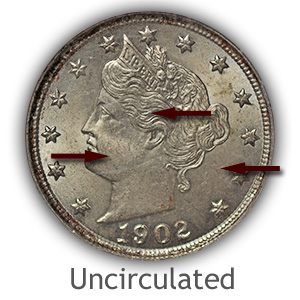
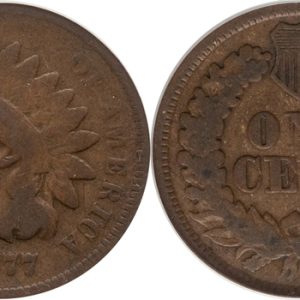
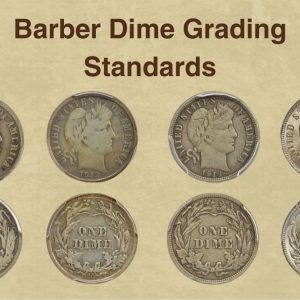
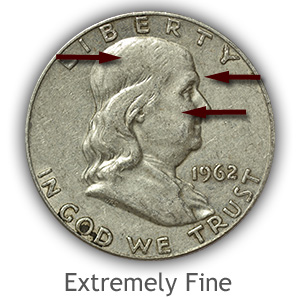
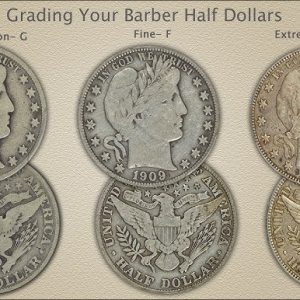
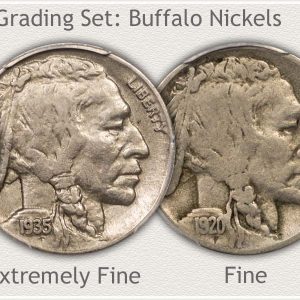
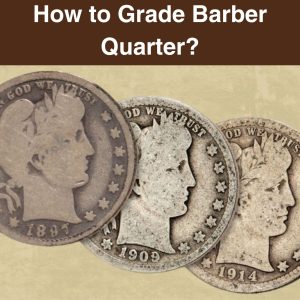
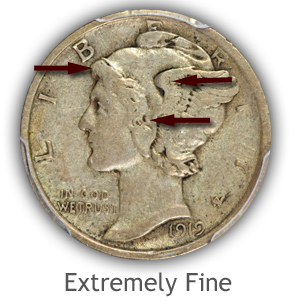

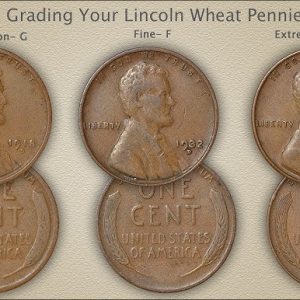
How much does it cost to get a quarter graded?
Getting a quarter graded typically costs between $20 and $40 per coin for a standard service, but the price varies based on the coin’s value, the grading company, and the desired turnaround time. You may also need to pay for annual membership fees, a submission handling fee, and shipping/insurance, which can bring the total to over $86 for lower-value coins.
How do I get my quarter graded?
To get a quarter graded, you can submit it to a third-party grading service like PCGS or NGC, either by becoming a member and mailing it yourself or by using an authorized dealer or coin show drop-off. The process involves filling out a submission form, paying the required fees, and sending the coin to be authenticated, graded, and encapsulated in a protective case.
How do I know the grade of my quarter?
To grade a quarter, examine its wear, luster, strike, and surface quality to assign it a grade on the 70-point Sheldon scale. Pay close attention to the coin’s high-point areas, such as Washington’s hair and cheek on the obverse and the eagle’s breast on the reverse, to detect even the slightest traces of wear, which diminishes luster and lowers the grade. Use resources like PCGS Photograde Online to compare your coin to detailed images for more accurate self-assessment.
How do you grade coins yourself?
To grade coins yourself, you need good lighting, a 5-8x magnifying glass, and references like the Official ANA Grading Standards or PCGS Photograde to learn the Sheldon Coin Grading Scale. Examine the coin’s design for wear on high points, assess its original luster, and check the surface for damage like scratches or corrosion. Use the details from your examination to compare the coin’s condition to the descriptions and images in your chosen reference to determine its grade.